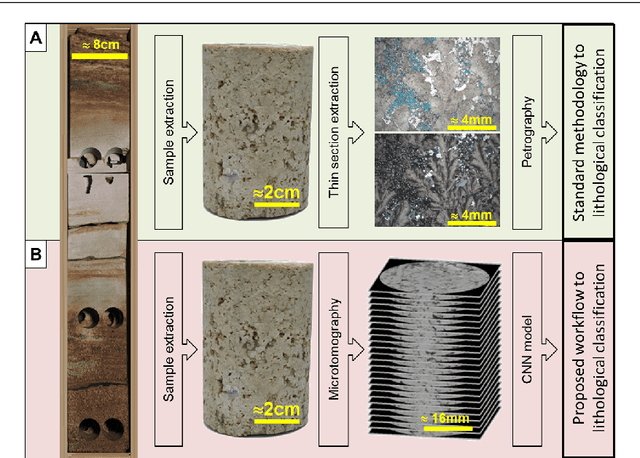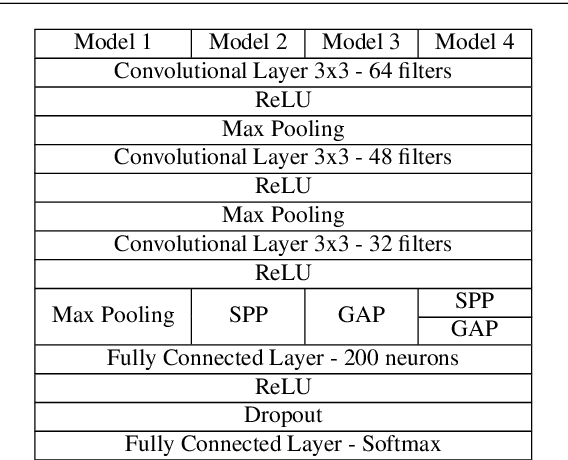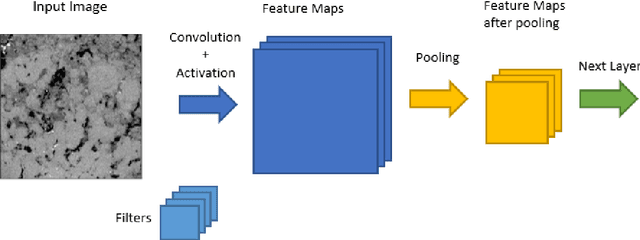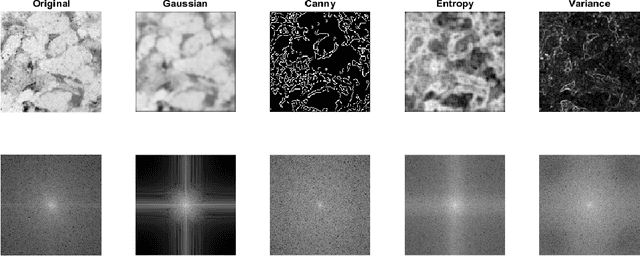Rodrigo Surmas
Deep learning for lithological classification of carbonate rock micro-CT images
Jul 30, 2020



Abstract:In addition to the ongoing development, pre-salt carbonate reservoir characterization remains a challenge, primarily due to inherent geological particularities. These challenges stimulate the use of well-established technologies, such as artificial intelligence algorithms, for image classification tasks. Therefore, this work intends to present an application of deep learning techniques to identify patterns in Brazilian pre-salt carbonate rock microtomographic images, thus making possible lithological classification. Four convolutional neural network models were proposed. The first model includes three convolutional layers followed by fully connected layers and is used as a base model for the following proposals. In the next two models, we replace the max pooling layer with a spatial pyramid pooling and a global average pooling layer. The last model uses a combination of spatial pyramid pooling followed by global average pooling in place of the last pooling layer. All models are compared using original images, when possible, as well as resized images. The dataset consists of 6,000 images from three different classes. The model performances were evaluated by each image individually, as well as by the most frequently predicted class for each sample. According to accuracy, Model 2 trained on resized images achieved the best results, reaching an average of 75.54% for the first evaluation approach and an average of 81.33% for the second. We developed a workflow to automate and accelerate the lithology classification of Brazilian pre-salt carbonate samples by categorizing microtomographic images using deep learning algorithms in a non-destructive way.
On a method for Rock Classification using Textural Features and Genetic Optimization
Aug 17, 2017



Abstract:In this work we present a method to classify a set of rock textures based on a Spectral Analysis and the extraction of the texture Features of the resulted images. Up to 520 features were tested using 4 different filters and all 31 different combinations were verified. The classification process relies on a Naive Bayes classifier. We performed two kinds of optimizations: statistical optimization with covariance-based Principal Component Analysis (PCA) and a genetic optimization, for 10,000 randomly defined samples, achieving a final maximum classification success of 91% against the original 70% success ratio (without any optimization nor filters used). After the optimization 9 types of features emerged as most relevant.
* 13 pages, 3 figures, 1 appendix. Replaced to match the published version
 Add to Chrome
Add to Chrome Add to Firefox
Add to Firefox Add to Edge
Add to Edge